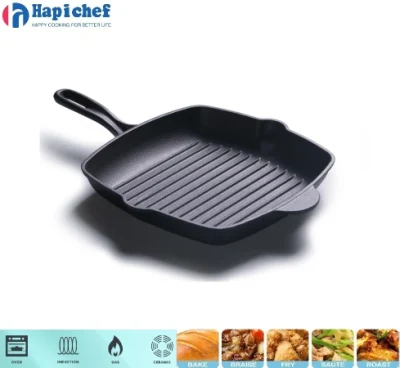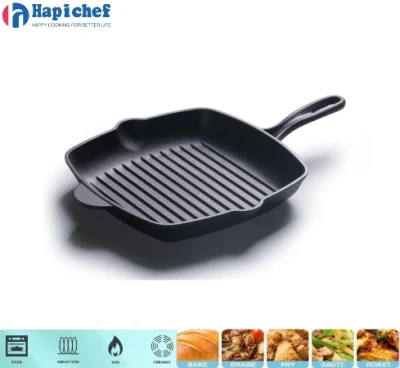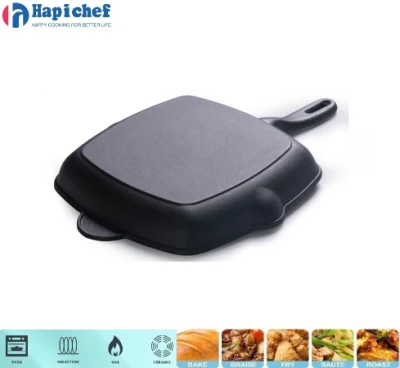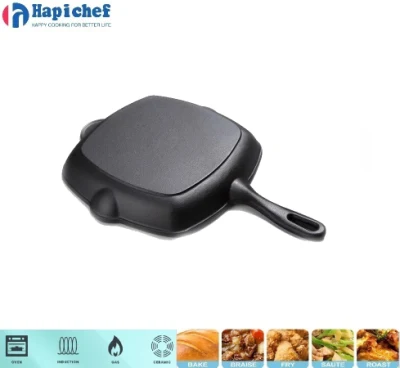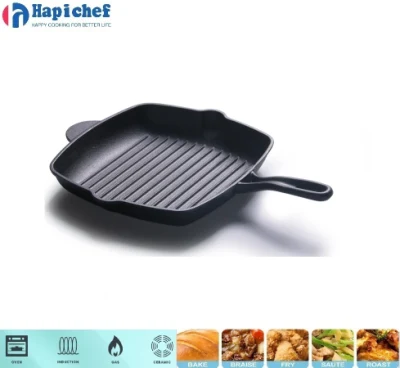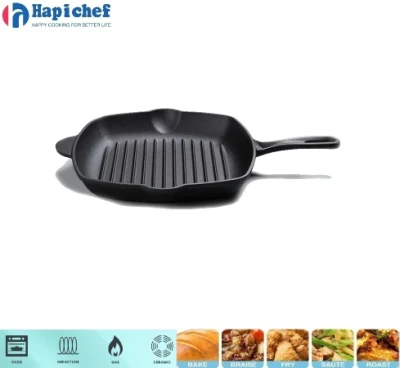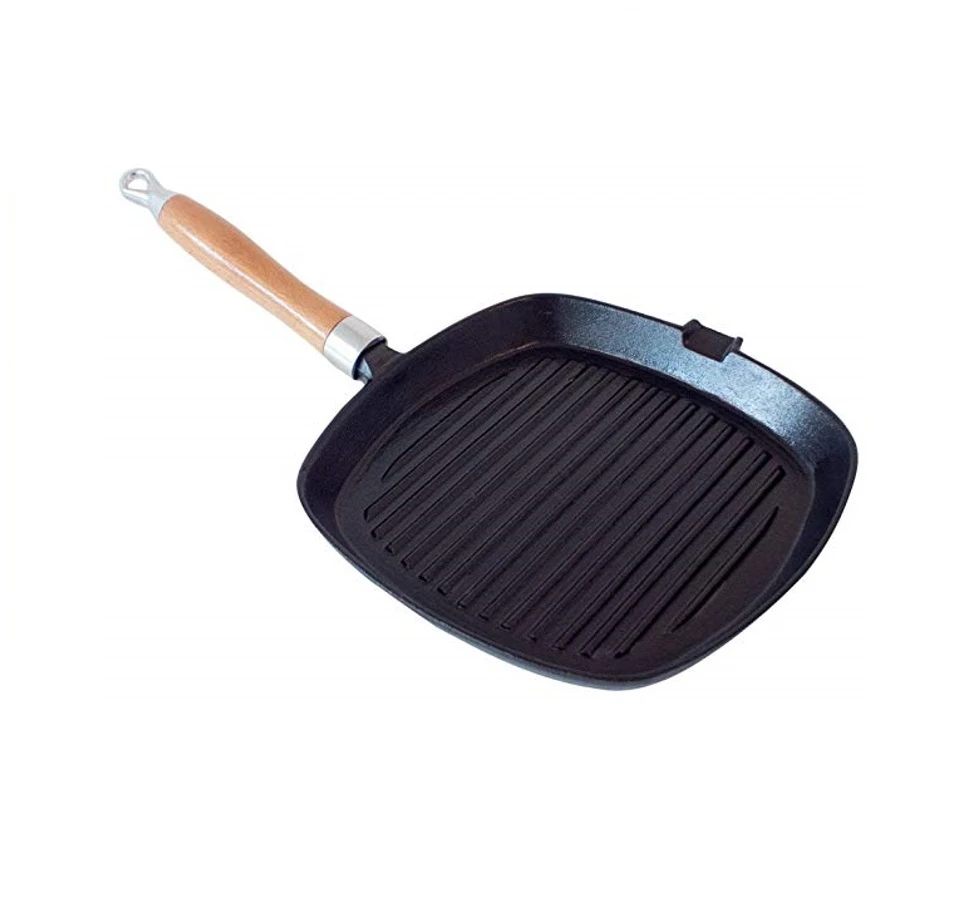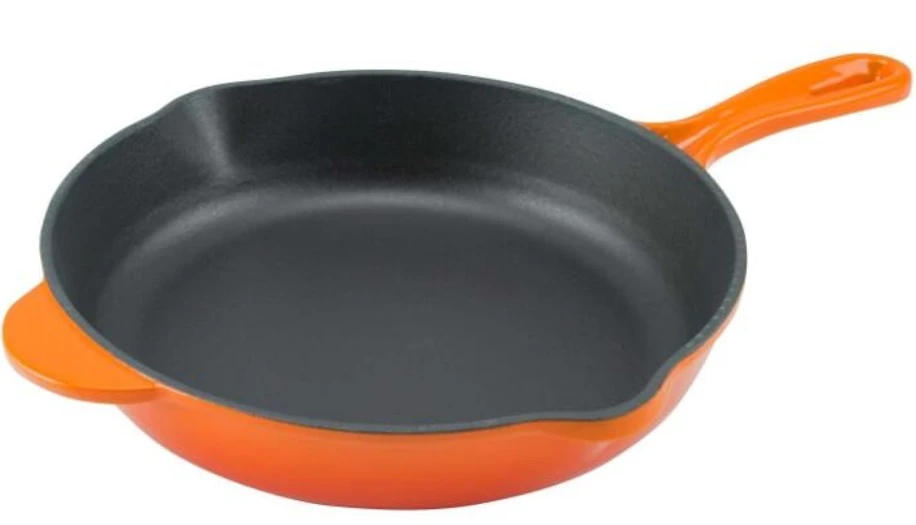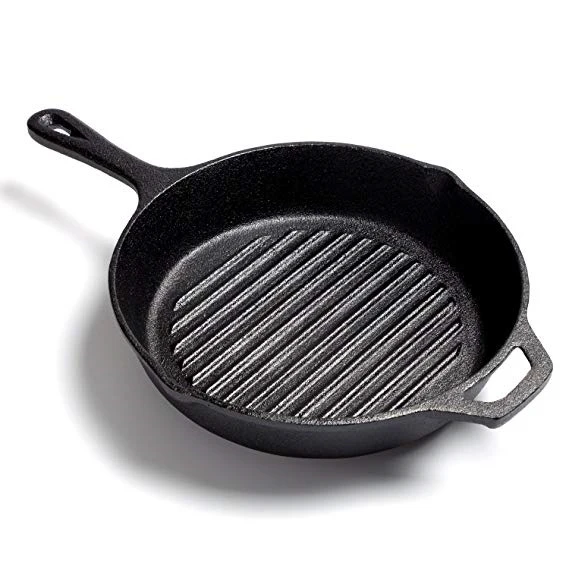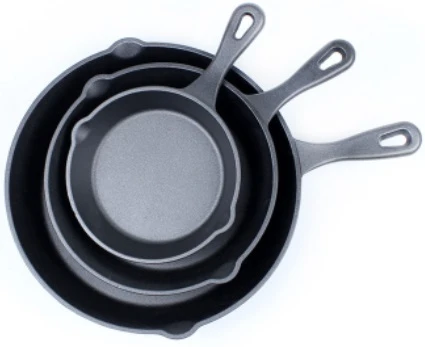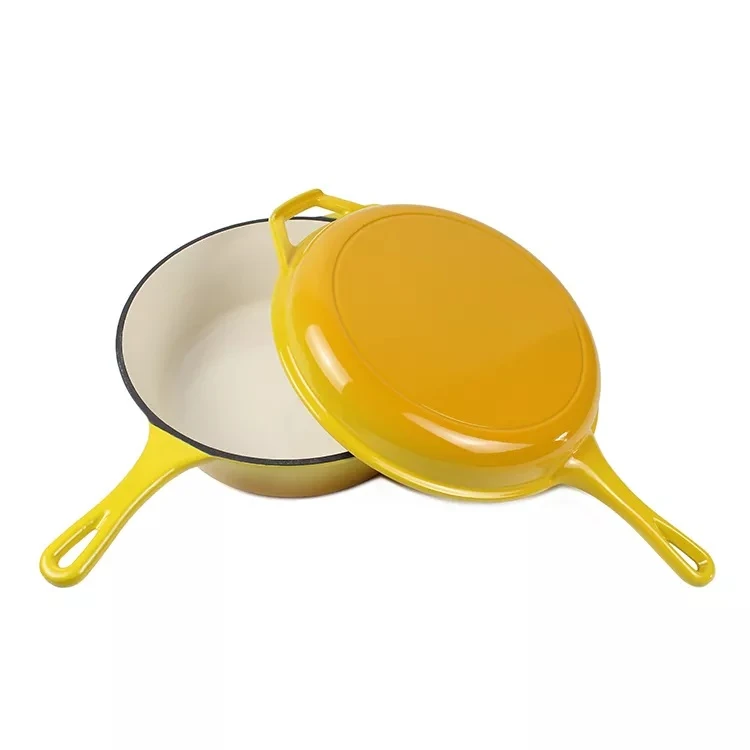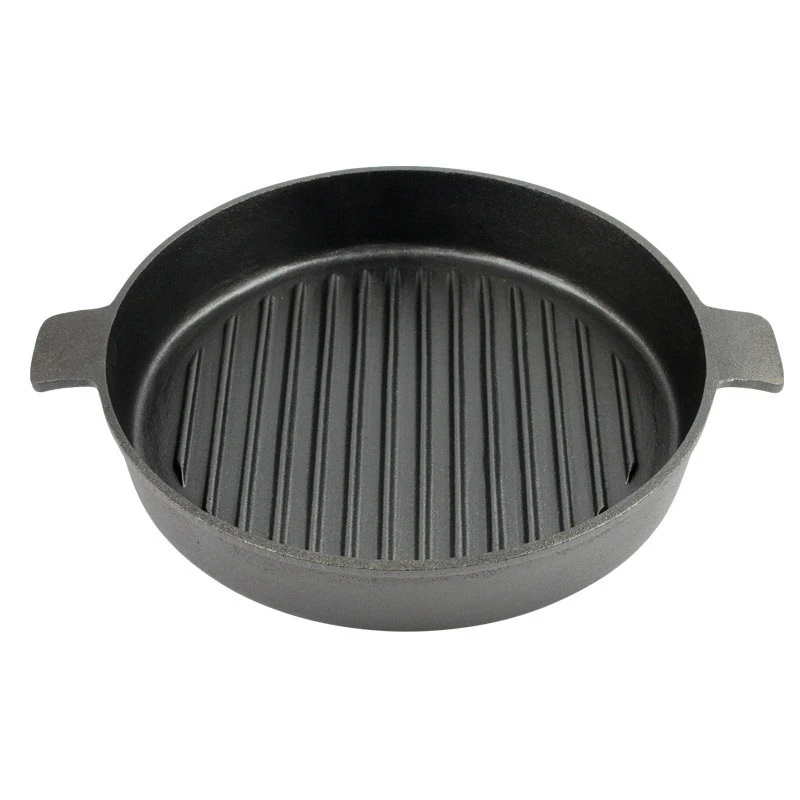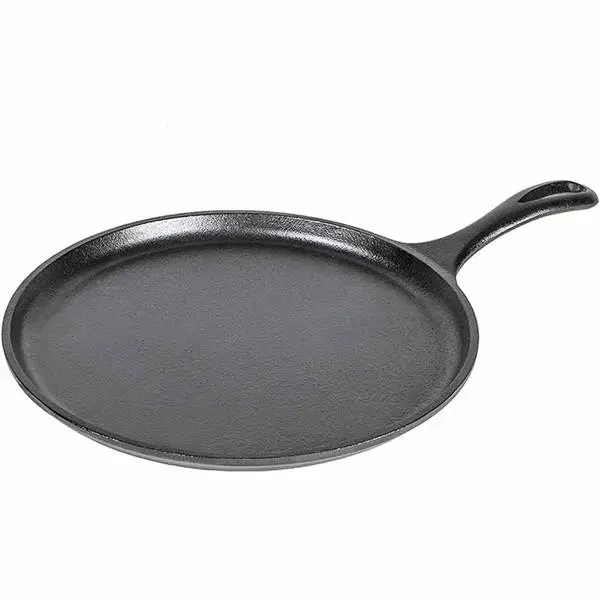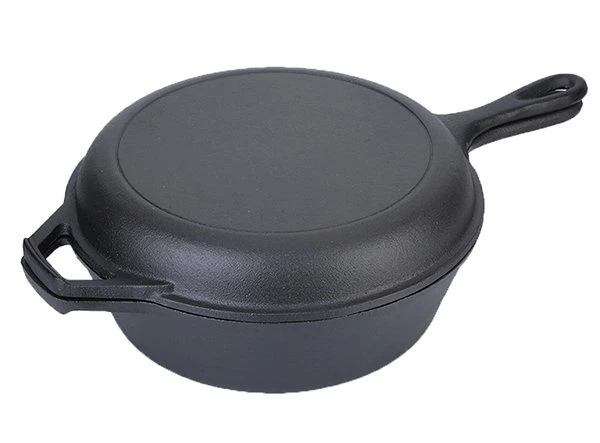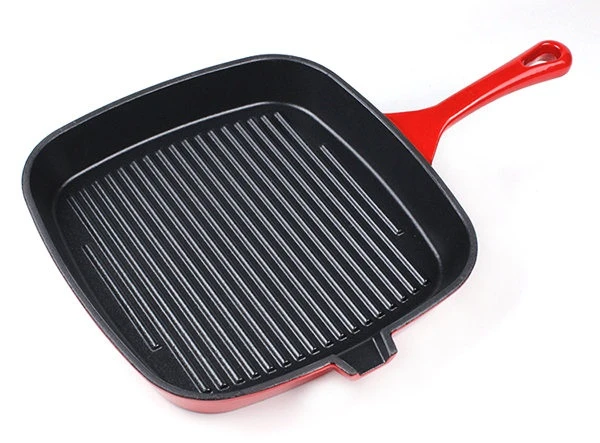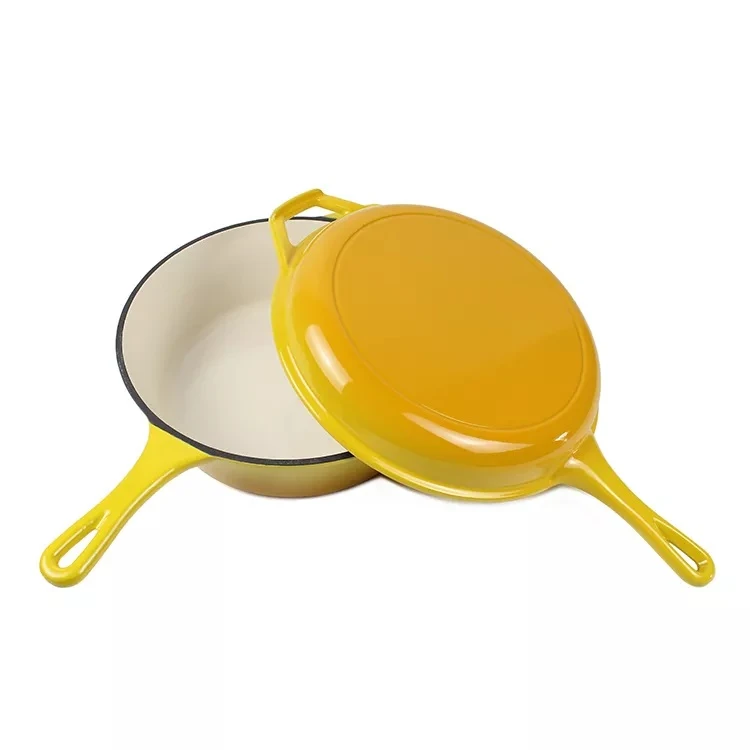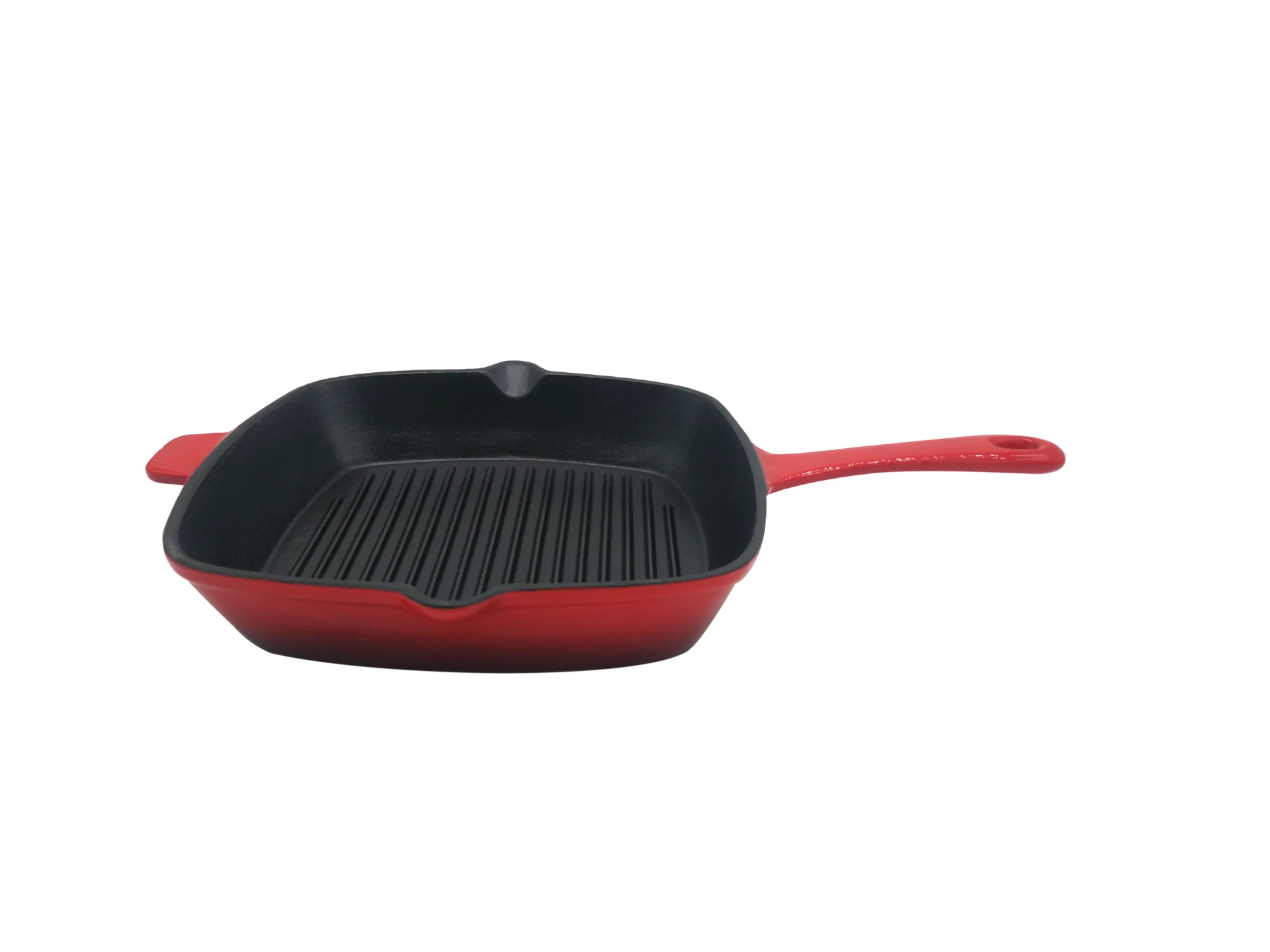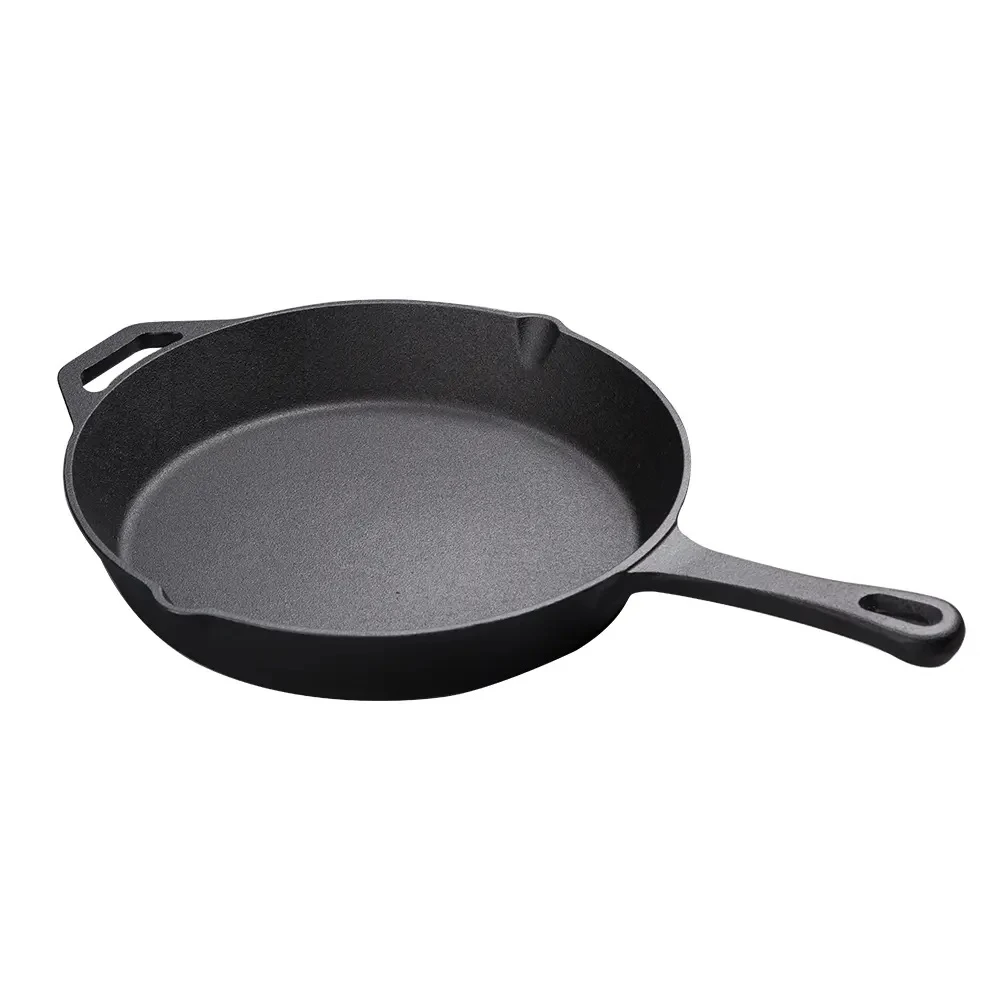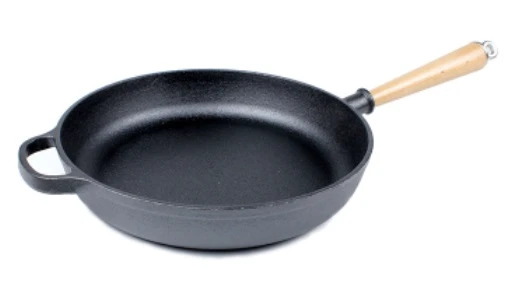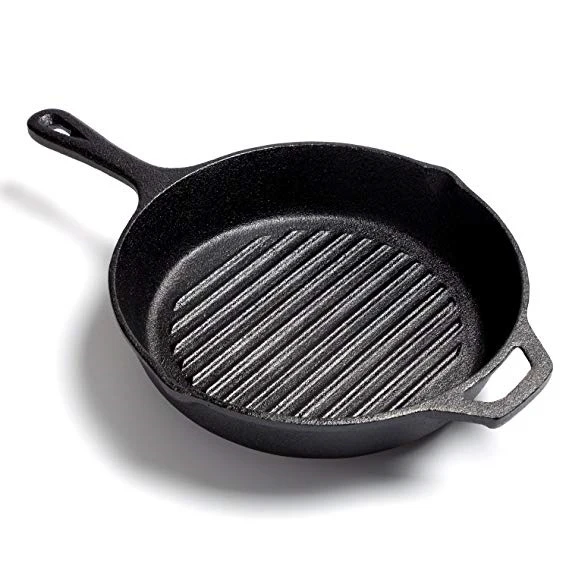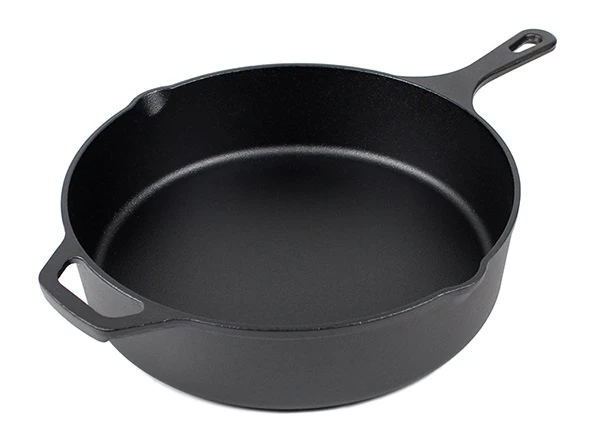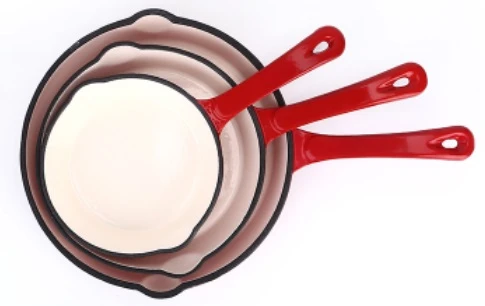Nga Taonga Kihini Tunu Tiaki Te Parai Parai Parai Parai Nga Taonga Mahinga Rino Kua Maamaa
| Ingoa Hua | Pahu tunutunu rino i mua i te wa o mua me te kakau porowhita | |
| Nama take. | HPGP03S | |
| Rauemi | Maka rino | |
| Tarapi | Hoatu ki roto i te peeke kirihou mirumiru, ka kuhu ki roto i te pouaka, hoatu ki roto i te kaata matua | |
| Rahi | 28*28*4.5CM | |
| Te paninga | Hinu Huawhenua | |
| Tae | Waho: Pango | Roto: Pango |
| Nga taputapu | Kaihoroi a Chainmail, Kei te waatea te pupuri kohua Silicone | |
| Painga | He rite te whakamahana, he iti te paoa hinu, he iti te paunga o te kaha | |
| Tauira | Kore utu | |
| MOQ | 500PCS | |
| Te wa tuku | 25-35 ra mai i te ra utu | |
| Tauranga Tauranga | Tauranga Tianjin | |
| Ratonga OEM | Moko, tae, rahi, me te puku ka taea te Whakaritea | |
| taputapu | Hau, Hiko, Whakauru, Umu | |
| Maemaa | He haumaru te horoi riu, engari e kaha ana matou ki te horoi ma te ringaringa | |
Whakataki Hua
Pane Tunu Rino i mua i te wa o mua
Ko te rino maka he pai ake te pupuri i te wera mo te tunu kai, me te tunu kai-kounga o te wharekai, ka tae mai i mua i te maoa mo tona mata tunu ina whakamahia ki te paparanga hinu. Ko te rimurapa hohonu ka taapiri i te reka o te bbq tunutunu ki nga kai i te wa e hanga ana te parai rino tino pai! He ngawari te whakaheke i te hinu i te wa e tunua ana mo te paopao, te baaka, me nga tapahi mīti katoa.
Enhancing Flavors: The Science Behind Cooking in a Cast Iron Grill Pan
Cooking with a cast iron grill pan goes beyond convenience; it’s a culinary experience rooted in science. The pan's superior heat retention and even distribution are key to achieving the rich, smoky flavors associated with grilling. Unlike other materials, cast iron holds heat for extended periods, creating the perfect conditions for the Maillard reaction—a chemical process where amino acids and sugars in food react under high heat to develop complex, savory flavors and a beautifully caramelized crust.
The ridges on a grill pan mimic the grates of an outdoor grill, allowing fats to drain off and reducing greasiness while imparting those iconic sear marks. These marks are not just visually appealing but also concentrated areas of intense flavor. Cast iron's natural seasoning, developed through repeated use, adds a subtle depth to dishes, as trace amounts of oil integrate into the cooking surface, enhancing the taste over time.
Additionally, the pan's versatility lets you experiment with a wide range of foods, from marinated proteins to fresh vegetables, unlocking unique textures and tastes. By understanding the science behind your cast iron grill pan, you can elevate your cooking to new heights, making every meal a masterpiece.
Product Display:
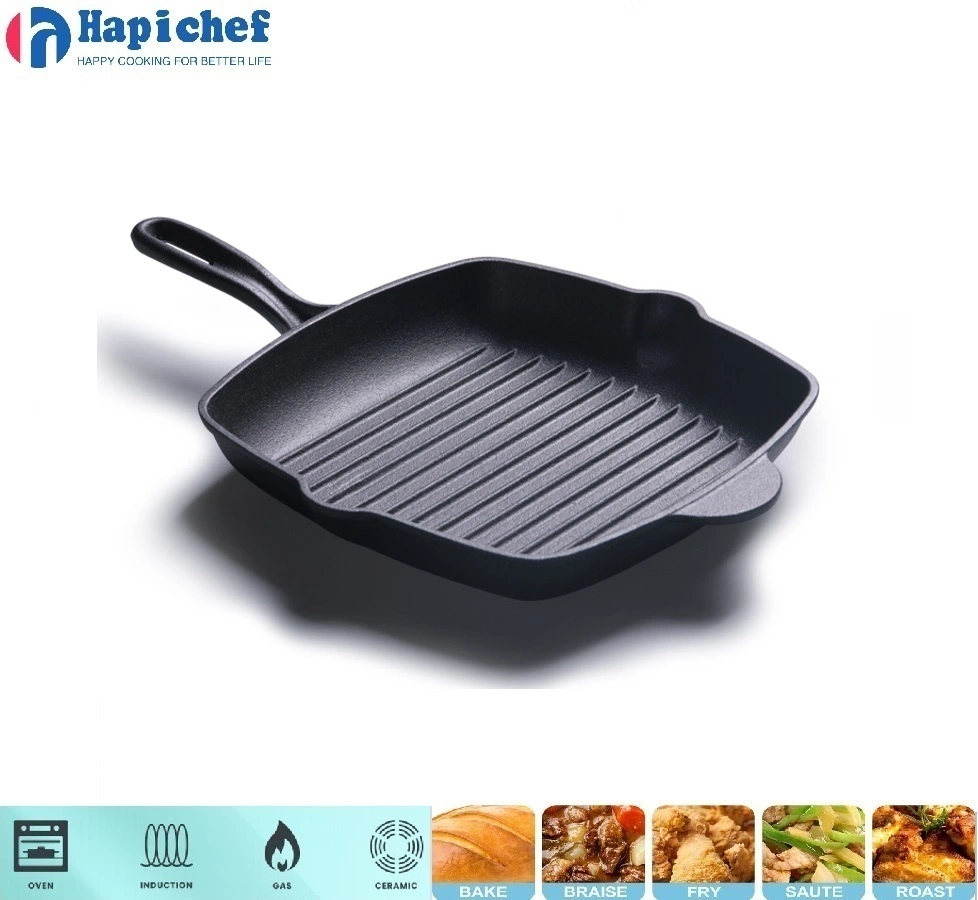
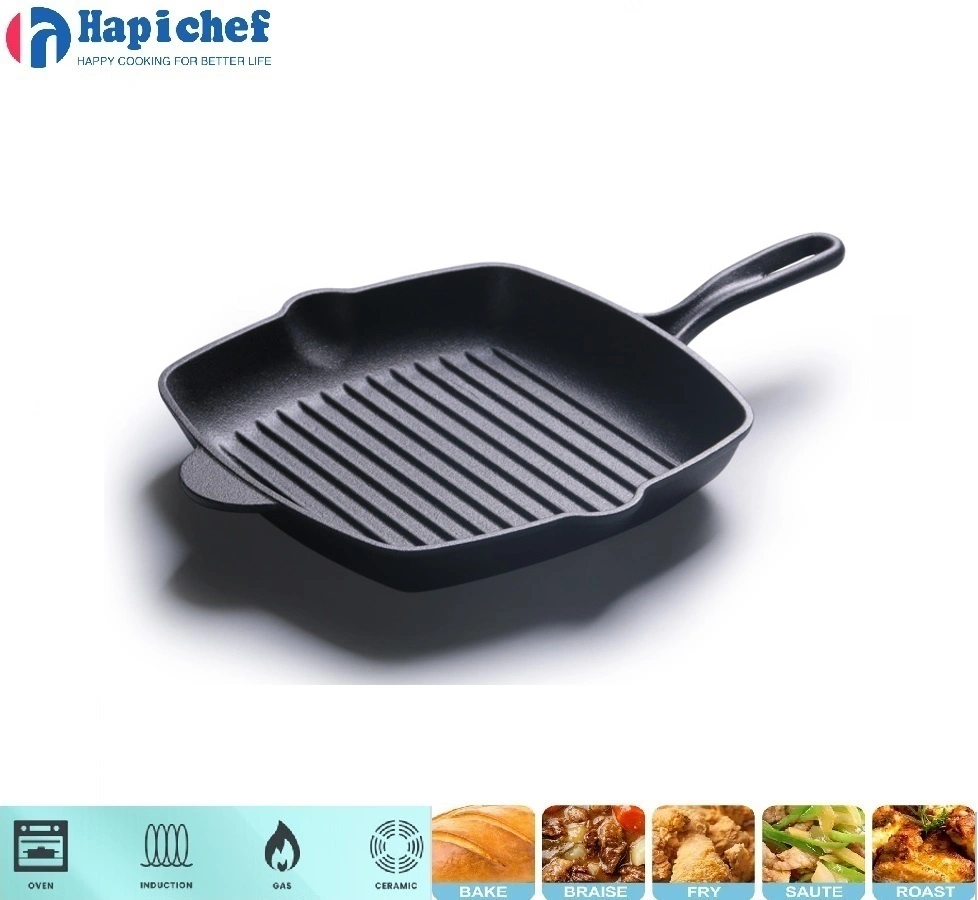
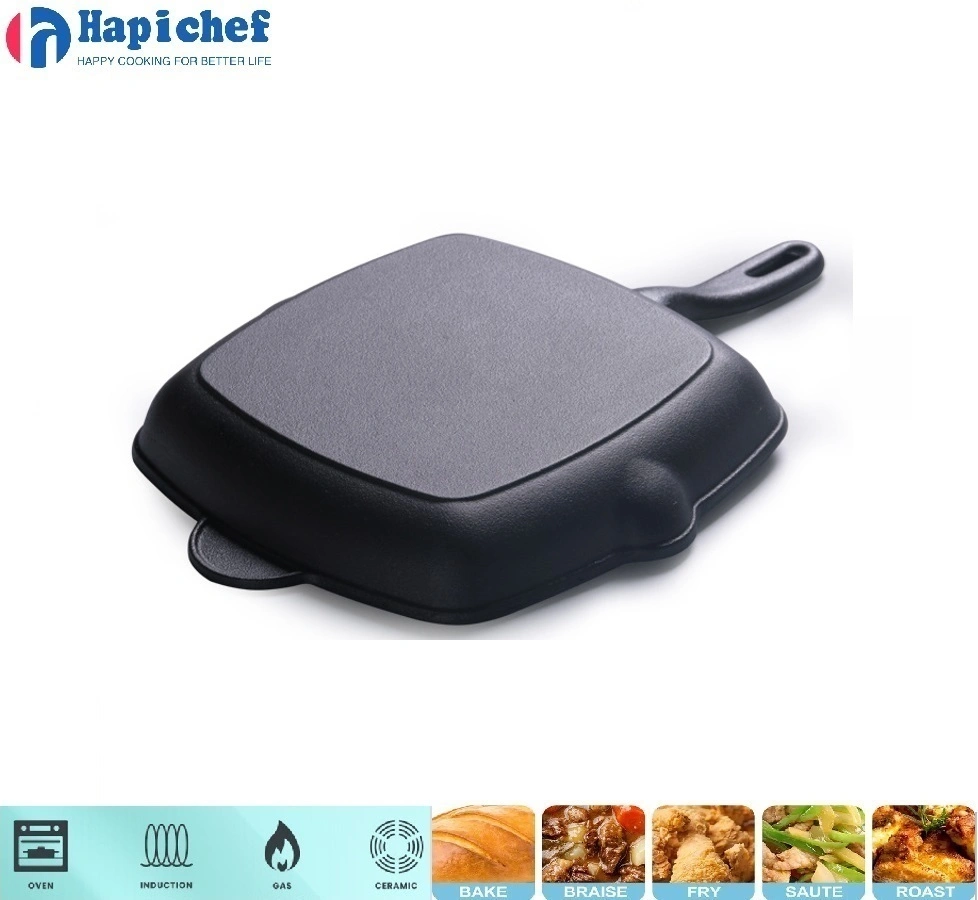
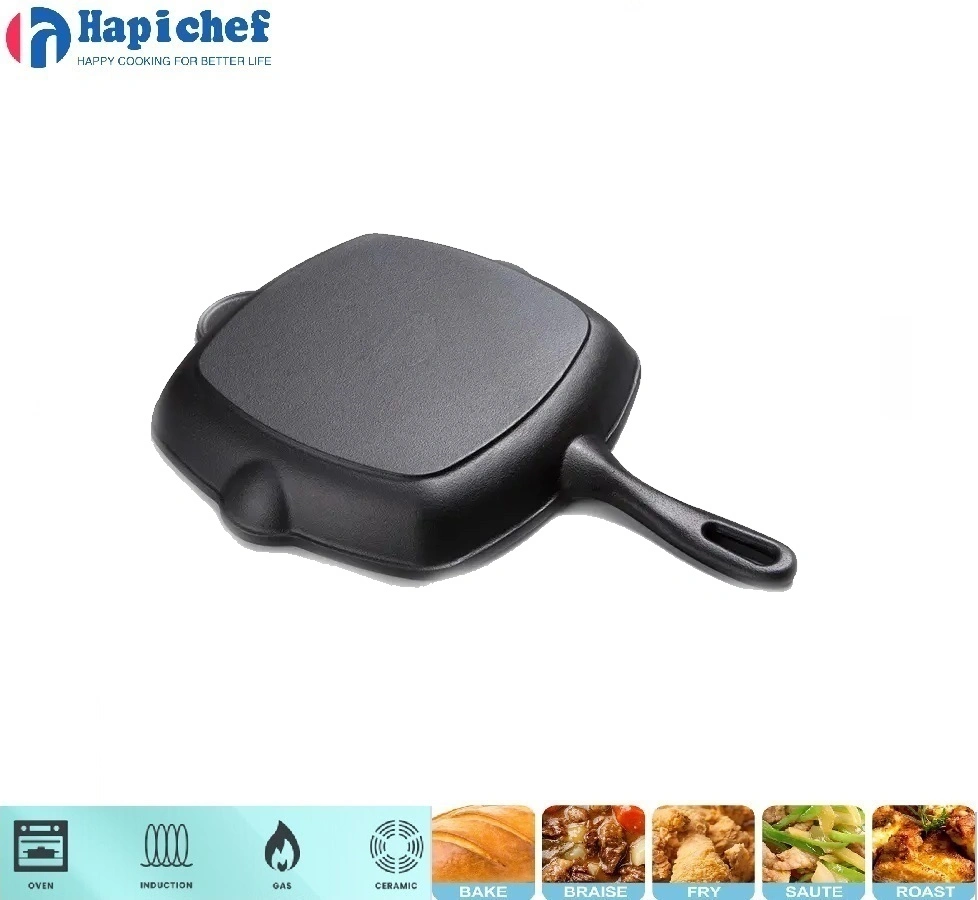
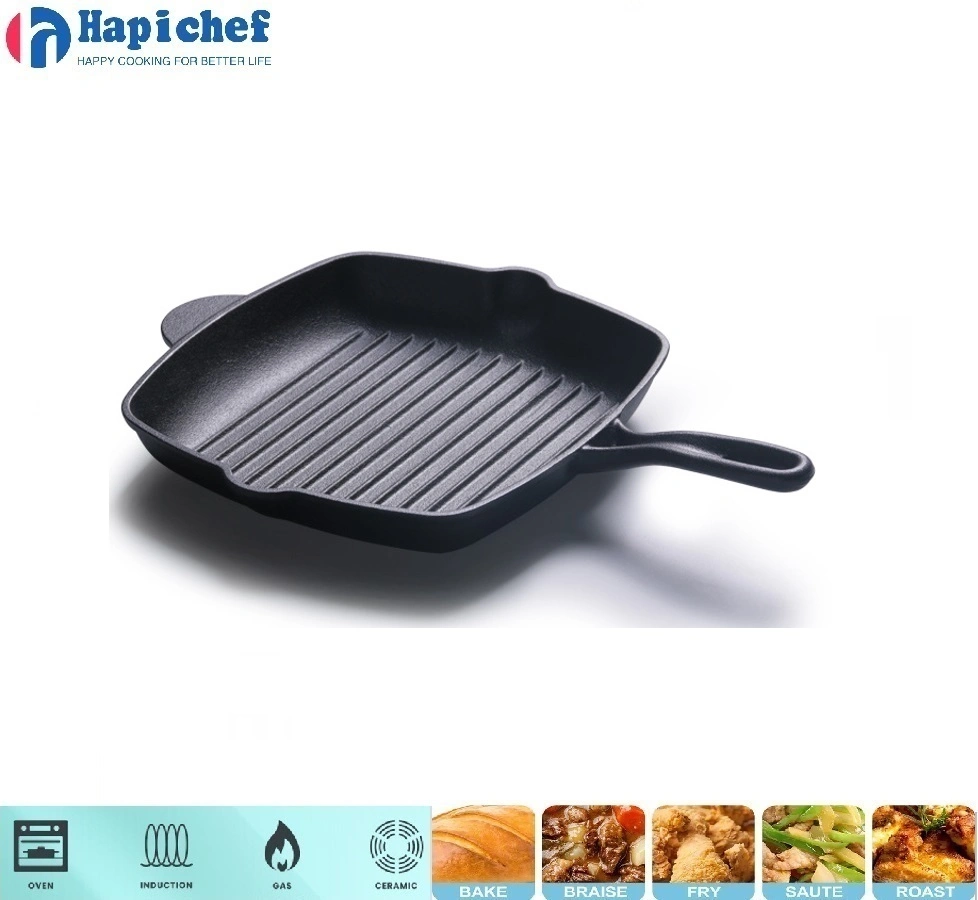
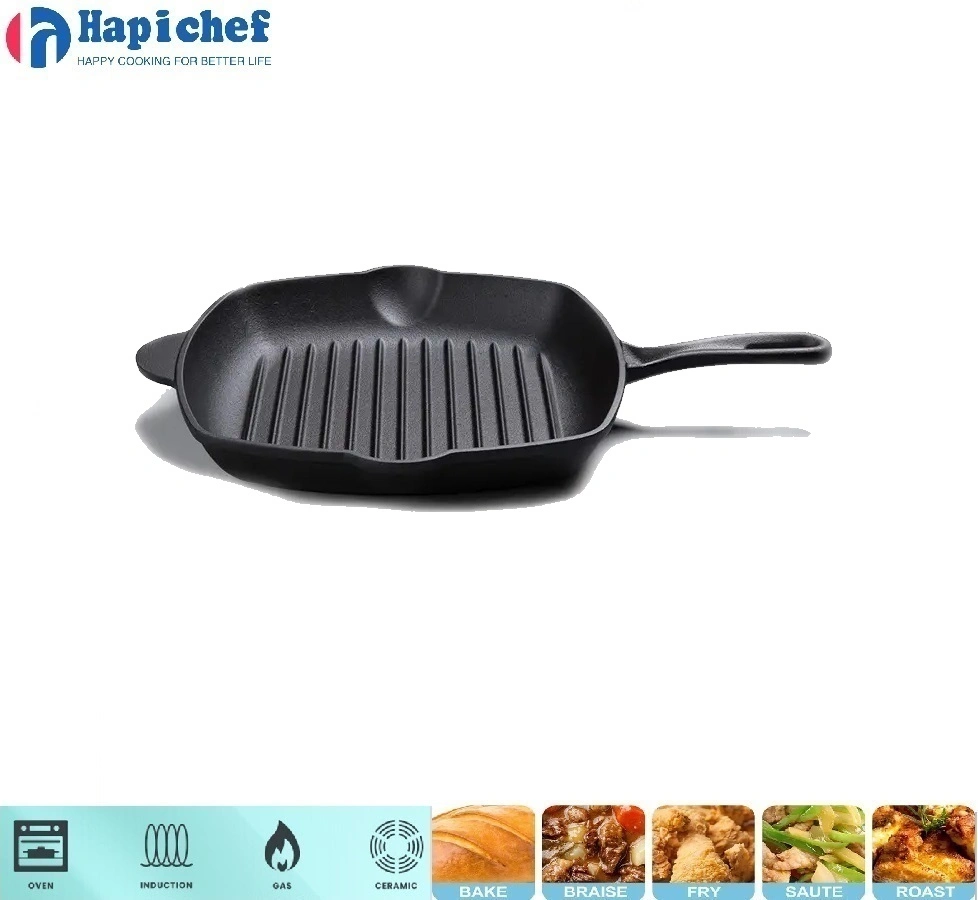
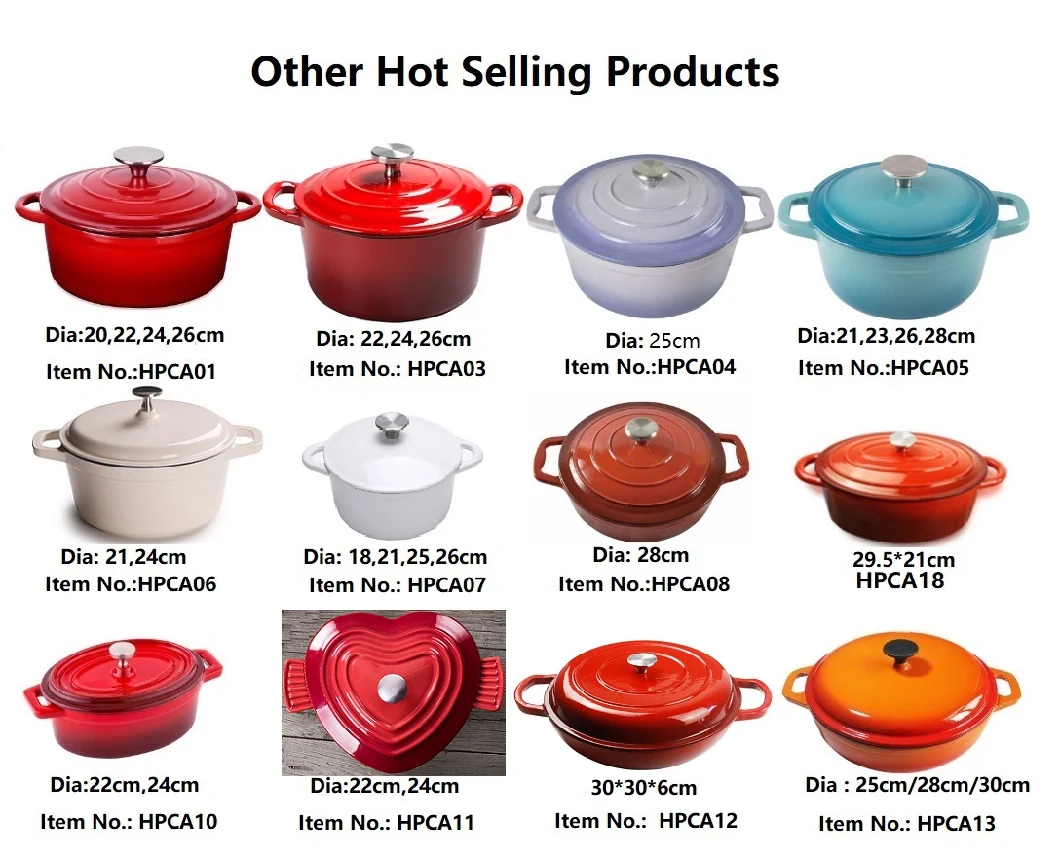
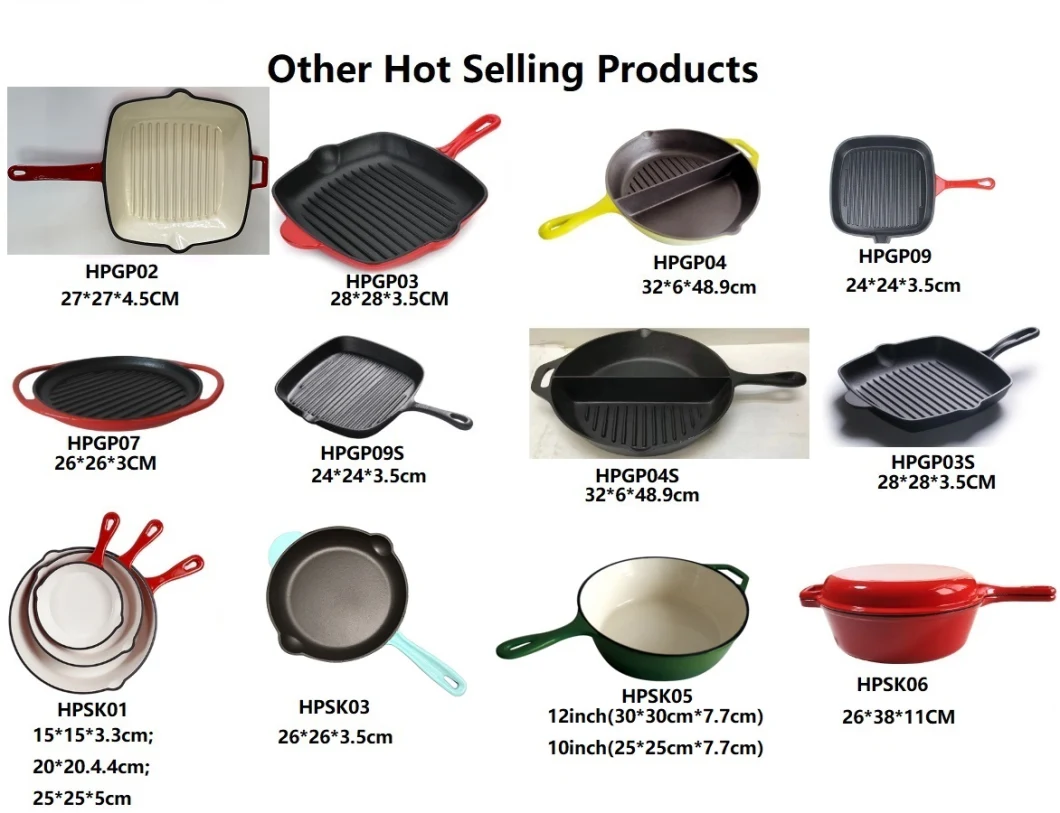
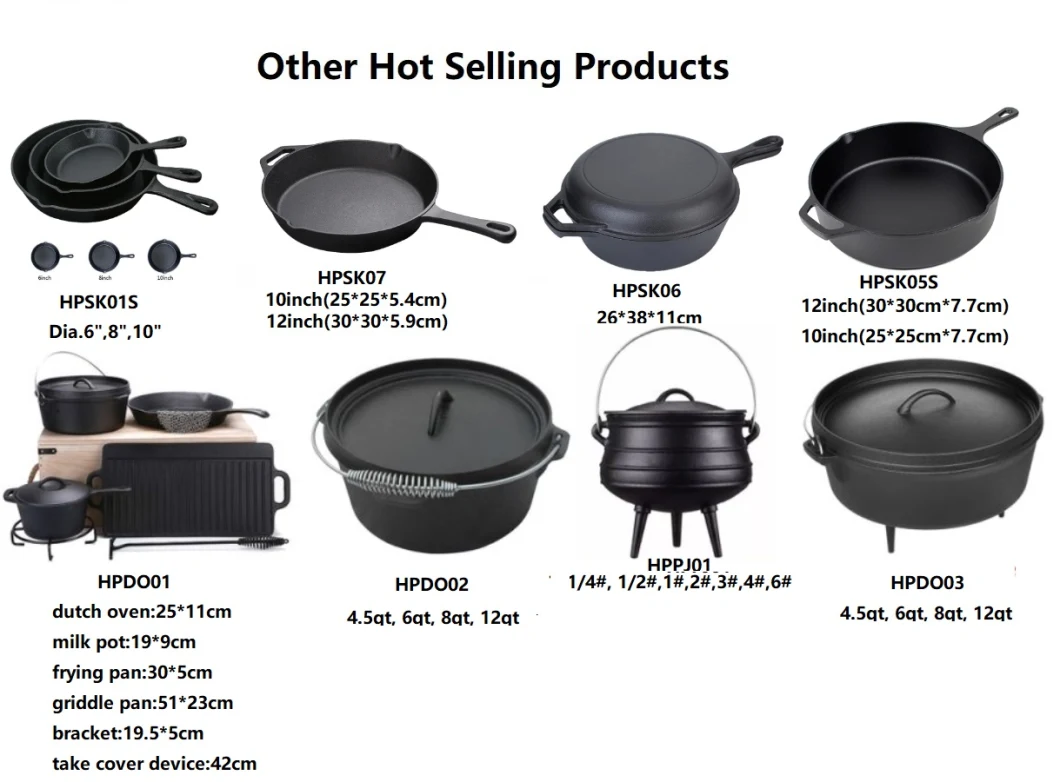
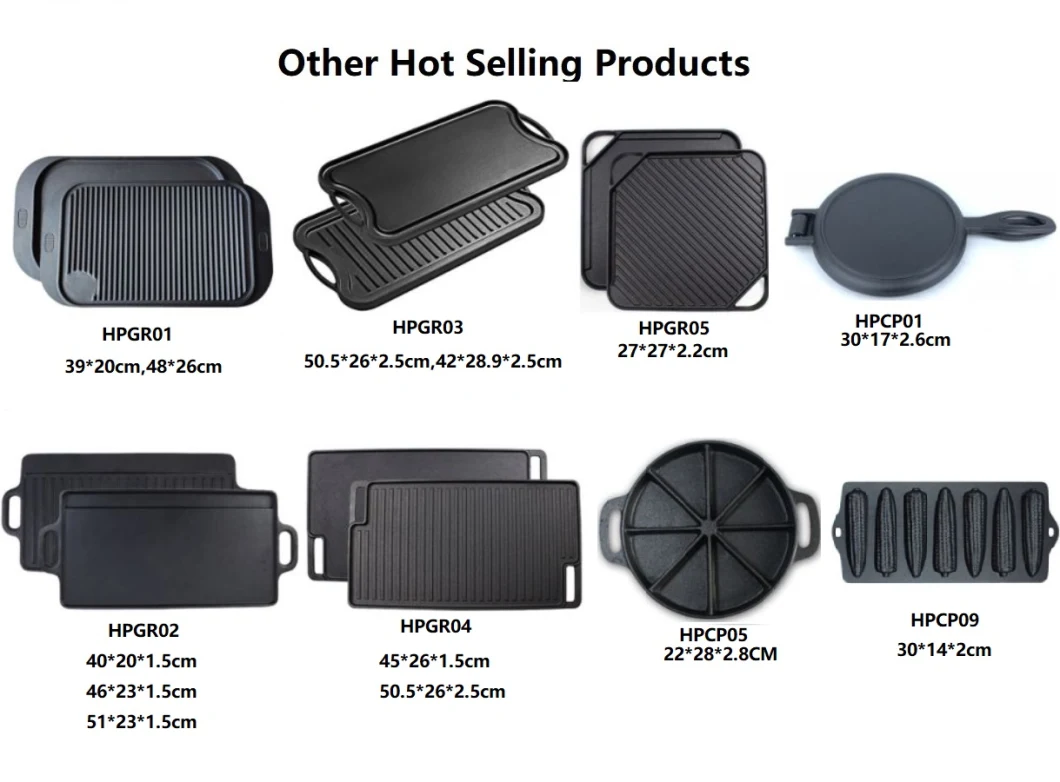
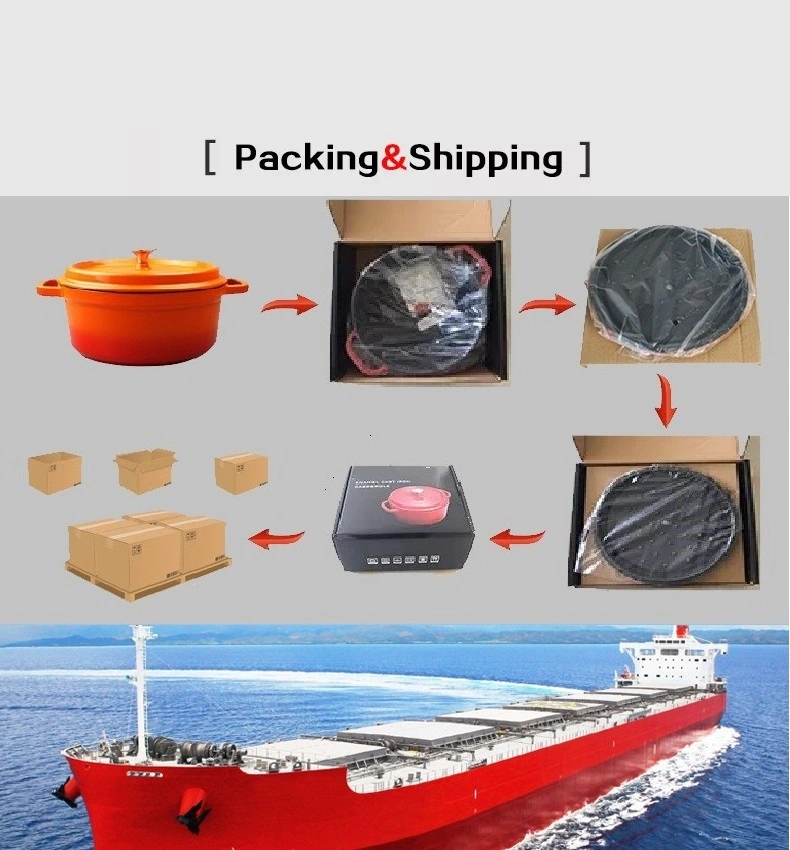
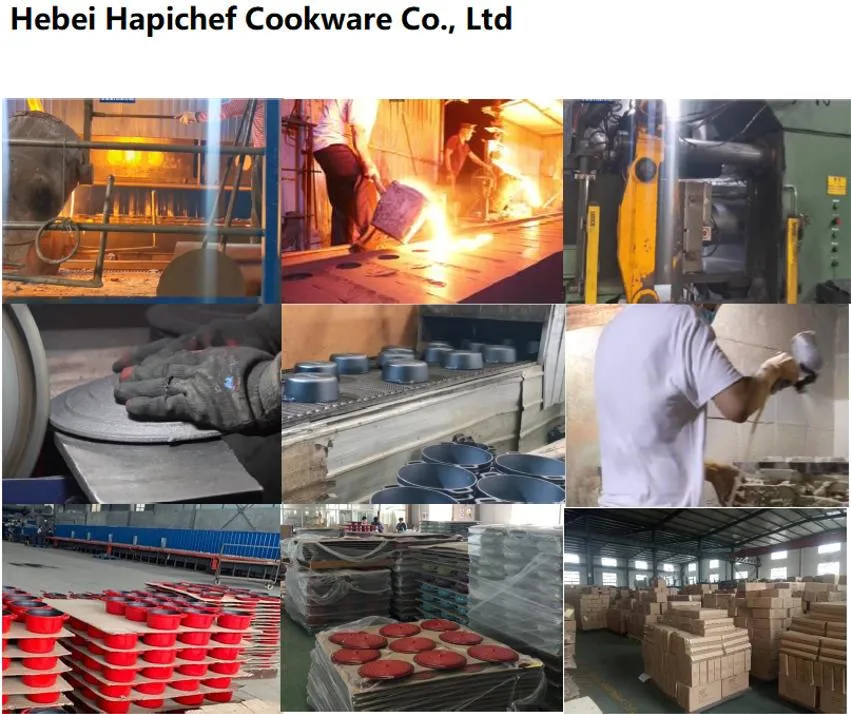
Seasoning Secrets: How to Care for and Maintain Your Cast Iron Grill Pan
Seasoning your cast iron grill pan is the key to preserving its durability and enhancing its non-stick surface. Seasoning involves building up a layer of polymerized oil, which protects the pan from rust and improves its cooking performance over time. To start, clean your pan thoroughly with warm water and a gentle scrubber, avoiding soap as it can strip the seasoning. Dry it immediately and completely to prevent rust.
Once clean, apply a thin layer of oil, such as flaxseed, canola, or vegetable oil, to the entire surface—inside and out. Bake the pan upside down in a preheated oven at 375°F (190°C) for about an hour, placing a tray underneath to catch drips. Allow it to cool in the oven before use.
Routine maintenance is simple: after each use, clean your grill pan with a brush or scraper to remove food debris, rinse with water, and dry promptly. Lightly oil the surface before storing to keep the seasoning intact. Avoid harsh detergents and prolonged soaking, which can erode the seasoning.
Ko Hebei Hapichef Cookware Co., Ltd he kaihanga ngaio me te kaweake i nga Taonga Tuka Maka rino mai i Haina. Kei roto i a matou hua tunu tunu rino ko te umu Tatimana, te tiihi, te parai parai, te kohua Potjie, te paraharaha tunutunu, te tunu tunu, te kohua, te woks, te rihi tunu, te pereti tunu, me era atu.
He rereke nga tukanga whakaoti mata (I mua i te wa, te paninga tohu, te waipara pango kore-paitini...). Ko te tae tohu me te tohu tohu ka taea hoki te whakarite.
I whakapumauhia ta matou kamupene i te tau 2006, kua kohia e matou he maha o nga wheako i roto i nga tau 10 kua hipa, na reira ka nui to matou kaha ki te whakarato i nga hua me nga ratonga Maataka Maamaa. Neke atu i te 10 tau nga mahi me te whakawhanaketanga, kua whakatauhia e matou nga painga whakataetae ki te maakete o te ao. Na roto i a maatau mahi katoa a nga kaimahi, e whakapono ana matou ka pai to taatau kamupene ki nga painga nui i roto i nga momo hua me te whānuitanga.
Ka tino whakarongo matou ki nga ture pakihi me nga tikanga me te mahi ano i runga i nga maataapono o te taurite me nga painga tahi. Ka whakapau kaha matou ki te tiaki i o maatau tuunga ki te maakete o te ao me te tuku hua kounga pai i nga wa katoa ki te whakatutuki i nga hiahia a nga kaihoko.
Mena kei te pirangi koe ki tetahi o a maatau hua, tena koa whakapiri mai ki a maatau.

